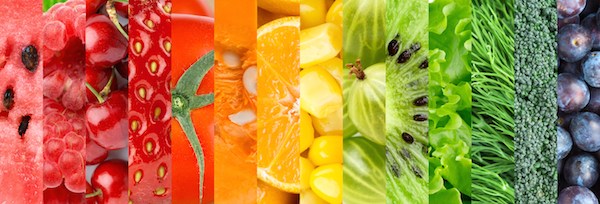Is this food acid or alkaline?
Foods are measured for their acid-forming and alkaline-forming effect after being digested. This doesn’t necessarily correspond to how acidic or basic that food is, outside the body.
This can get a little tricky, because acidic foods – like lemons and tomatoes – are actually alkaline-forming inside the body.
So a better question is, “Is this food acid-forming, or alkaline-forming inside my body?”
The acid- alkaline-forming effect is measured in 2 ways. The ‘old fashioned’ way was based on the pH of the burnt ash of that particular food. This burning was thought to provide some understanding of how digestion affects the pH of the food. The other way is by testing the urine of individuals (for protein, phosphorus, potassium, magnesium and calcium) after eating certain foods, to see what their kidneys do to maintain the narrow pH range required by the body. This second measurement is called PRAL – or Potential Renal Acid Load.
Whilst it’s been a natural health concept for many decades, it is now increasingly accepted by modern mainstream medicine too.
Not surprisingly whole foods – particularly vegetables – are alkaline-forming, compared to processed and fast foods which are acid-forming.
Have a look at these acid – alkaline forming foods resources:
- Acid Alkaline Food chart USA nutritionist
- Alkalising food e-book with specific guidelines
- Acid Alkaline Chart for the visually oriented
In general, choose alkaline-forming foods over acid-forming foods.
Avoid getting too rigid with the acid alkaline concept (or any nutritional concept for that matter).
Take the acid/alkaline selection process as a guideline of how to eat, and not a prescriptive rule to get obsessed and stressed out by.
Interestingly, most of the alkaline-forming foods contain lots of minerals such as potassium, magnesium and calcium, which help to buffer acids to support many aspects of optimal health.
Your body is amazingly capable of responding to the challenges it faces, and able to bring you back to balance. Try to tune into what your body is truly needing, rather than eating in the “standard dietary”, habitual way. Incorporate any diet changes gradually to enable a sustainable internal shift. If you eat only alkaline-forming foods, you might experience and imbalance from shifting too quickly then find yourself gorging on fast foods, coffee or donuts to swing you back to more acidic side of the range.
Aim for 80/20
A most realistic aim is being ‘good’ 80% of the time, and ‘naughty’ 20% of the time, so that you don’t feel deprived. During Phase 4 of Sparkle Detox, you might aim for 95% alkaline-forming.
________________________
This is part of Sparkle Detox Course – a detailed, step-by-step, effective and safe, body tissue cleansing process designed by Naturopath Sally Mathrick. If you haven’t already, JOIN Sparkle Detox for life-time access to wholistic, doable, ‘delicious-with-benefits’ practices to keep your precious body-mind healthy, fresh and vital. JOIN NOW
Copyright Sally Mathrick – Please cite and link back to www.sparklewell.com.au if using this information






